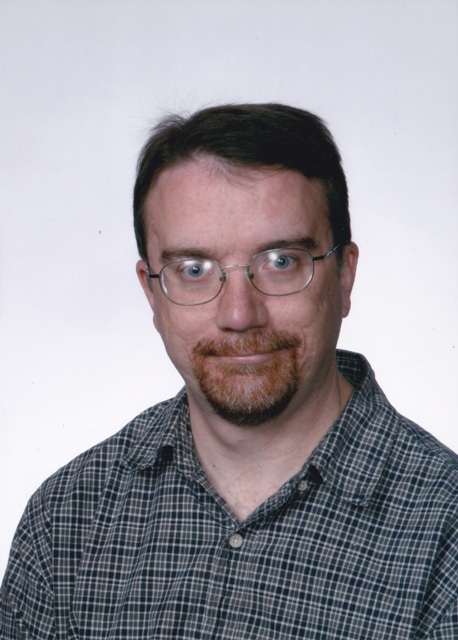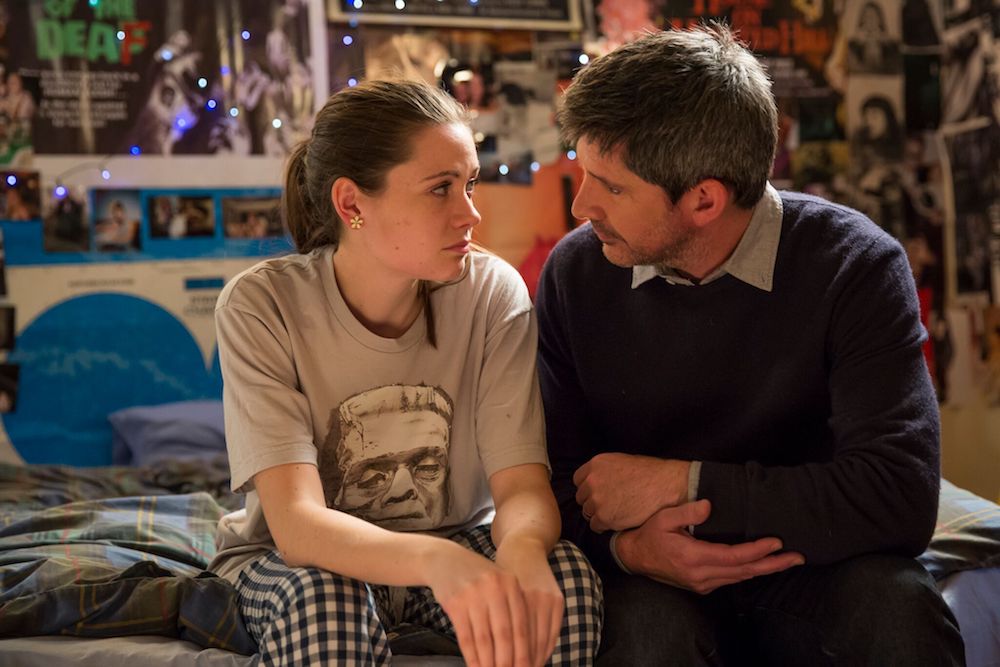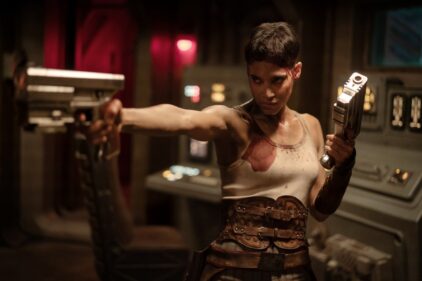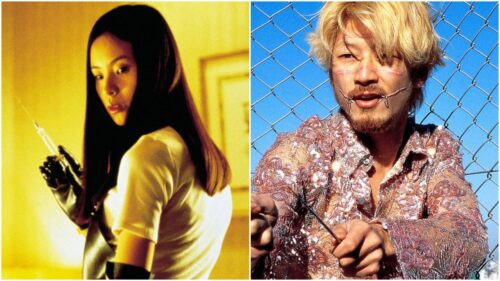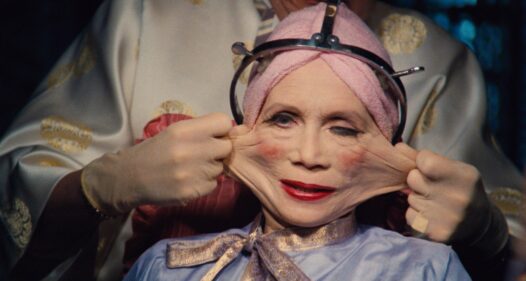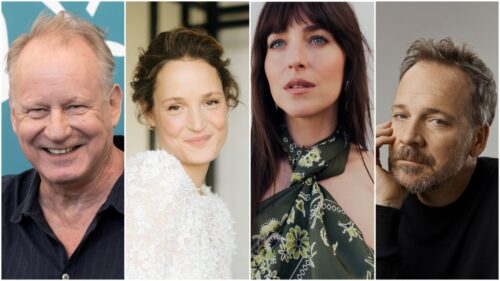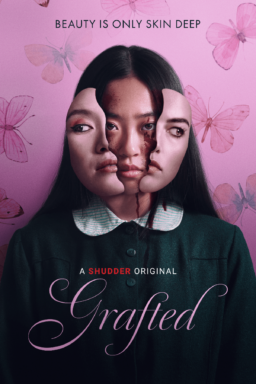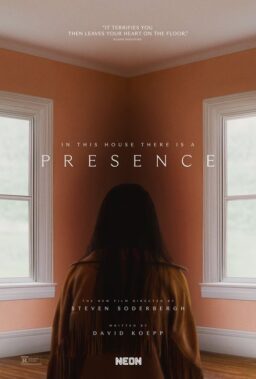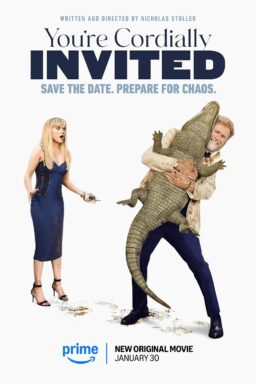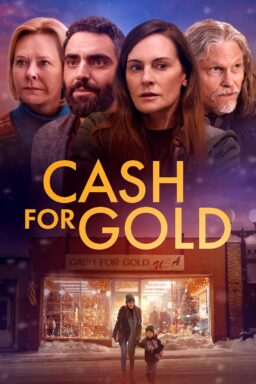Rob Savage’s “Dawn of the Deaf” is kind of maddening in that to describe the film is to give away its central premise, which is revealed at the very end. It’s a film that is all set-up. It feels like the first 10 minutes to a feature that has a brilliant idea for a zombie film that we will hopefully see someday. It’s too good an idea to go to waste. I remember when I saw the credits and shouting “Dammit!” when it was over. I say all of this as a high compliment, by the way.
“Dawn of the Deaf” is a zombie movie where we see the origins of the zombie apocalypse through four separate narratives, all involving deaf people: A few cruel-hearted pranksters taunt deaf people on the streets; a deaf person gives an inspirational speech at a fundraising event as his wife watches; a lesbian couple try to work out their relationship problems; a teenager is being sexually abused by her stepfather.
None of his has anything to do with a zombie apocalypse, of course. These are just the stories that could eventually tie themselves together if given a longer running time to do so. Savage lays these stories out in a way that flows more smoothly with each repeat viewing. First-timers might have some difficulty getting assimilated to what is going on at first, but one has to admire the ambition of trying a multiple-storyline aesthetic in a ten-minute short.
Savage and his team pull it off with great confidence. The cast is first-rate and cinematographer Sam Heasman constructed a beautifully choreographed shot in a subway that also incorporates a clever use of subtitles. The Vimeo page for “Dawn of the Deaf” insists that the viewer either wear headphones or have a top-notch sound system in order to better experience the sound design. Not a lot of shorts will go those extra miles for the film to be as much an aural experience as a visual, but such attention to detail bodes well for the potential feature film I hope to see someday.

First, let’s clear the air on a very important topic: Fast zombies or slow zombies?
It depends on what you’re after—I love the slow, creeping inevitability of Romero’s shuffling zombies. The way that he makes them comical as individuals, but horrifying as they amass.
I’m also a big fan of the “Dawn” remake and other fast-moving zombie flicks like “Train to Busan,” in which the immediacy of the danger is the driving force. They represent two different approaches to horror—the slow-burn, knot-in-your-stomach school of filmmaking, or the kind that gets your pulse up. I’m a fan of both, when done well.
What was the inspiration behind this?
The original idea for “Dawn of the Deaf” came from the beautiful, f—ed up mind of Jed Shepherd who is a good friend and collaborator of mine. He’s always pitching me great ideas and when he mentioned “Dawn of the Deaf” I knew that I had to make it. I’ve been a big zombie fan for years, but hadn’t found the right idea until now.
I noticed one of your producers said the scene in the subway “shouldn’t have been possible.” What was the challenge there?
We made the film for £7,000 from start to finish, which is barely enough to afford one day’s shooting, involving two actors talking in a room. Let alone a five-day shoot with almost 500 extras. This wouldn’t have been possible without the skills of Douglas Cox, our producer, who is an absolute wizard when it comes to making the impossible happen.
The subway shot was one of the first moments that I came up with when developing the idea. We managed to secure a location in the middle of London, which is below one of the biggest roundabouts in the city and is swarming with people 24/7—it would usually cost thousands to shoot there, but luckily I had done some work with the organisation that own the tunnel, and we were able to shoot there for free.
I roped in all of my Facebook friends to come and be dead bodies, and we designed the shot so that the camera starts above the subway—seeing the whole of Waterloo roundabout, and all of the people and cars milling around, which gave us a greater sense of scale and production value—and then moves into the subway, which was under our control. This makes the moment feel much more epic and expensive.
It took all day to get the shot, as there were so many elements that had to be timed to perfection—it’s a testament to our amazing team of Assistant Directors that the shot came together so well.

This seems like a try-out film for a potential feature. Can we expect a feature film version of
“Dawn of the Deaf”?
The end goal has been to make “Dawn of the Deaf” as a feature film. While the short is pretty self contained, we made it as a means of convincing investors and audiences alike that the concept had potential as a mainstream horror film that would engage with both hearing and Deaf audiences.
The main aim is to make a compelling, unique and pant-wettingly scary horror film. But we also firmly believe that the film could be a powerful means of bringing Deaf talent to the fore. Horror isn’t driven by star power, but can still draw a large mainstream audience if it delivers the goods, so we are hoping that the feature film—which will be made with an entirely Deaf cast—will be a step towards greater diversity on screen.
Tell me a little about the casting. Are we seeing Deaf actors or actors playing Deaf people?
We used a mixture of Deaf and hearing actors—which is slightly controversial, especially among the Deaf community. Our funding was contingent on us using actors from the Royal Central Drama School in some of the roles, and so we auditioned almost 50 students before settling on our hearing actors, and then put them through almost six months of BSL (British Sign Language) training, with a Deaf coach, so that their signing was as authentic as possible. Once this leg of the shoot was over, we put out a casting call to Deaf actors so that the film would contain a mixture of performers, both Deaf and hearing.
We had an incredible team of translators working with us throughout the shoot, which ran just as smoothly as any other shoot I’ve had. I’m generally quite a demonstrative director and we blocked through the lines and movement at the start of the day, allowing us to shoot and reset very quickly once we were up and running. Stephen Collins, who plays Kevin, is an incredible lip reader and so on our one re-shoot day we did not even need to hire a translator.
On the Vimeo page, you’re very particular about how viewers hear the film while they watch it. Without getting too deep into the woods, what was the biggest challenge in getting the sound design just right?
The sound mix of the film took a lot of consideration and is one of the elements I am most proud of—and is entirely down to our fantastic sound designer/mixer Callum Sample. We spent many months experimenting with just how far we wanted to push the sound design, making sure not to over-stylize and risk disrupting the flow of the film. Obviously, we knew that at some point the sound would have to drop out—though never to complete silence—and we’d enter the headspace of one the Deaf characters, a moment we wanted to have huge impact. However, if we relied too heavily on stylizing the sound design, we would risk alienating a Deaf audience and so we decided that the first half of the film was about normalizing the Deaf characters in the eyes of the hearing audience, where we adopted a more conventional approach to the sound design, and that towards the end of the film we would allow the sound to become more stylized, bringing in a lot of bass so that the impact is still felt by Deaf viewers in a cinema environment.
What’s next for you?
As well as the “Dawn” feature, I’m also developing a couple of other films including an Amblin-style horror film and a time travel thriller. I’ve just finished up on my first TV show, for Channel 4, which is called “True Horror”—I wrote and directed an episode based on an amazing true story. I’m also in post on a new horror short called “Salt,” which I’m very excited about.
Dawn of the Deaf from Rob Savage on Vimeo.
